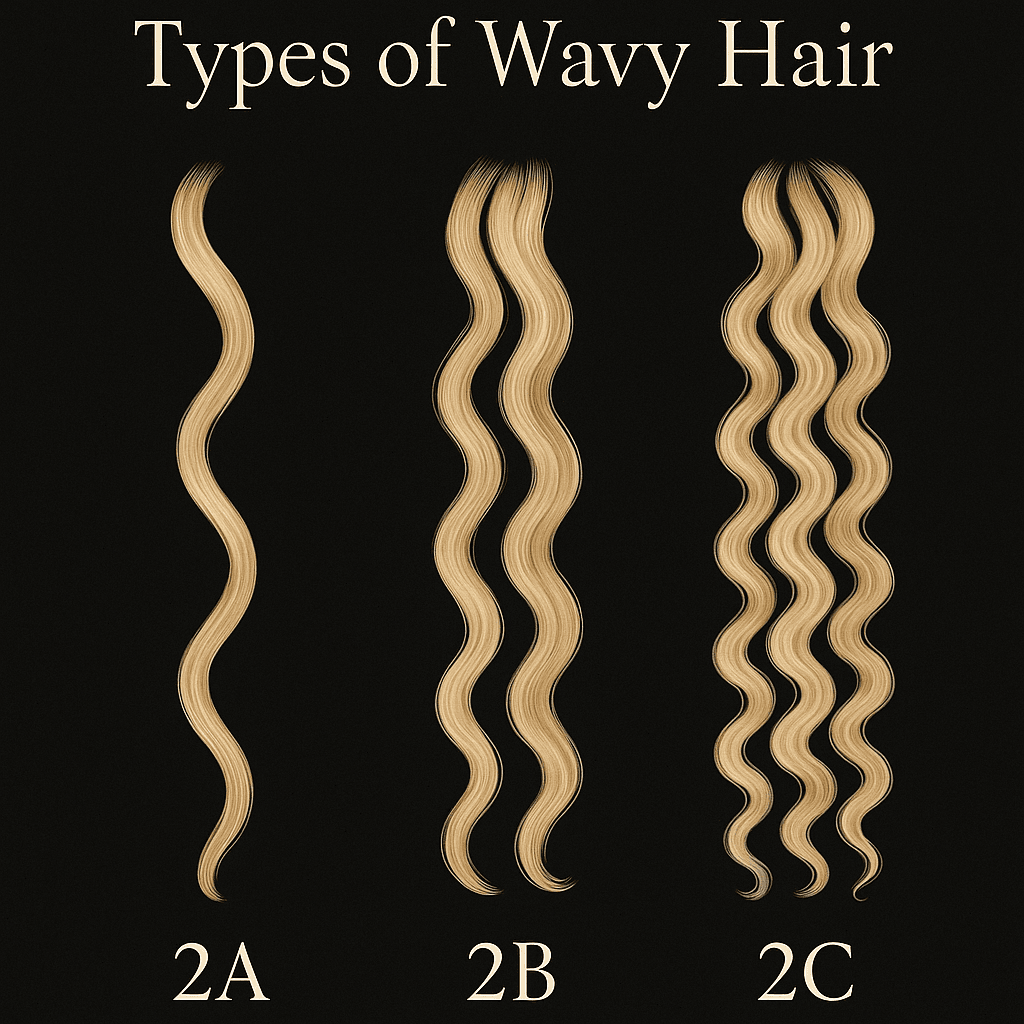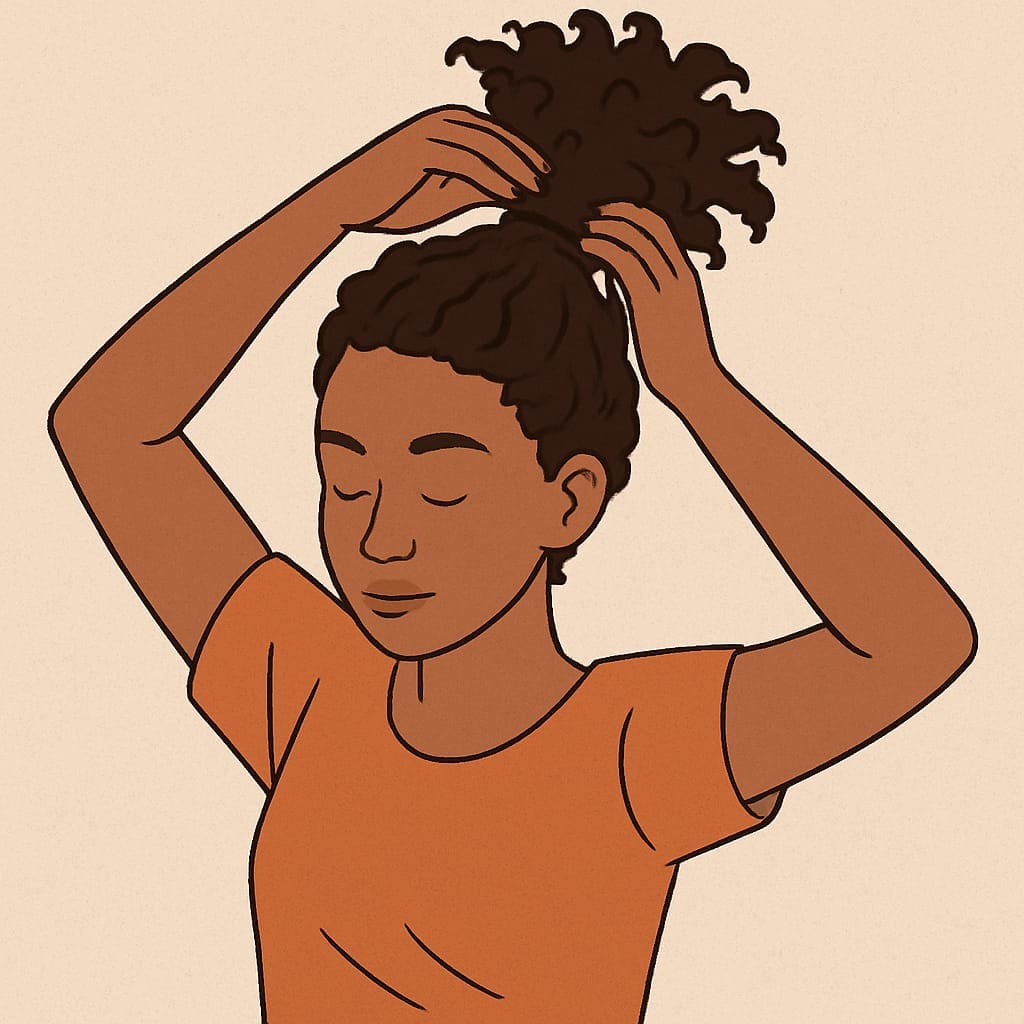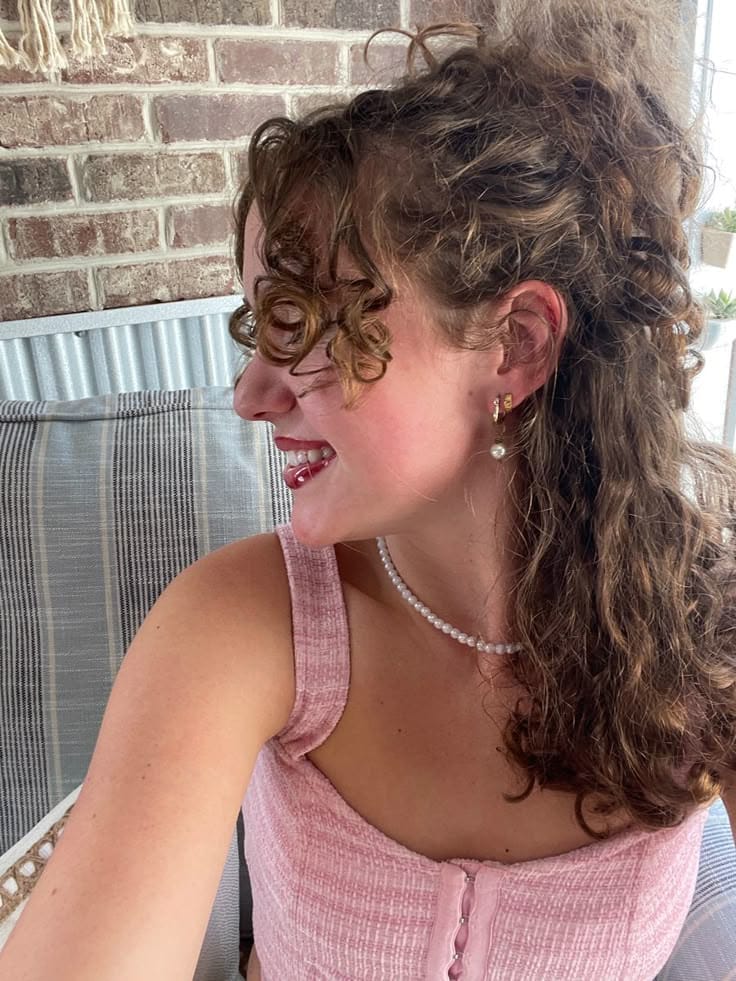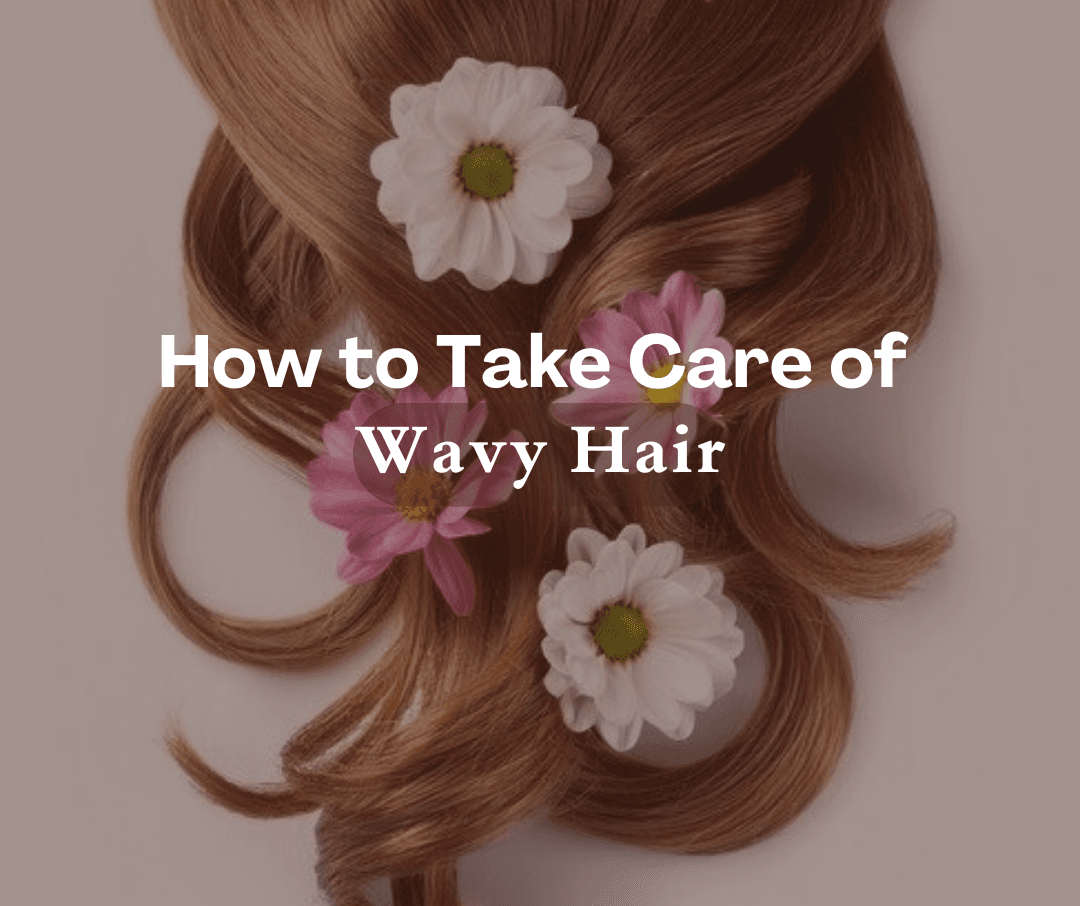Wavy hair is naturally beautiful. It’s soft, full of movement, and falls between straight and curly hair. What makes it special is its flexibility!
You can wear it neat, defined, or loose and tousled, and it still looks stylish. Many women love wavy hair because it gives a relaxed, effortless look without much work.
Waves add volume and texture to your hair. A wavy hairstyle suits almost every face shape and works well with different lengths, whether short bob, shoulder-length cut, or long layers.
You can try fun styles like the wolf cut or add soft layers and curtain bangs to highlight your natural texture.
The best part? You don’t have to fight your hair to make it look good. Once you understand your wave pattern and choose the right haircut and products, your natural waves will look healthy and full of life.
In this blog, we will learn how to care for wavy hair, from choosing the right products to styling tips that bring out the best in your waves.
Identifying Your Wave Pattern
Not all wavy hair looks or feels the same. That’s because wavy hair falls into three main categories: 2A, 2B, and 2C. Each type has a different texture, shape, and amount of wave, and knowing yours can help you choose the right products and styling methods.
 Type 2A:
Type 2A:
These waves are very loose, almost straight at the roots and slightly wavy at the ends. The strands are fine and flat, which makes them easy to style, but they can also fall flat without volume.
Type 2B:
This type has more defined waves that start from mid-length. The strands are thicker and may have a slight frizz. With the right products, you can enhance the wave pattern and add shape to your hairstyle.
Type 2C:
These waves are thick, closer to curls, and often frizzier or puffier. They have strong S-shaped patterns and may need extra moisture and definition.
Build a Balanced Wash Routine
Most people with wavy hair find washing 2–3 times a week works well. This gives your hair time to hold moisture and stay soft without looking greasy. If you have fine hair or your roots get oily quickly, you can wash more often, but try not to overdo it.
Look for a sulfate-free shampoo. Sulfates are harsh cleaning agents that can make hair dry and frizzy. A gentle, moisturizing shampoo will help keep your wave pattern soft and defined.
What About Co-Washing?
If your hair feels dry or you have thick waves (like 2B or 2C), co-washing (using only conditioner to cleanse your hair) can be helpful. This method keeps the hair hydrated while still cleaning the scalp. Just be sure to use a lightweight, silicone-free conditioner and rinse well.
Conditioning for Wavy Hair: Hydrate and Define
Conditioning is one of the most important steps in caring for wavy hair. It helps keep your waves soft, hydrated, and defined. The key is to choose the right conditioner and use it correctly.
Deep conditioning treatments are perfect for thicker hair or dry waves. Use a deep conditioner once a week to give your hair an extra boost of hydration and restore any lost moisture.
When choosing a conditioner for wavy hair, look for glycerin, aloe vera, and proteins. These ingredients help lock in moisture, add definition, and improve your hair’s texture.
For wavy hair, a leave-in conditioner can work wonders. It keeps the hair hydrated without feeling heavy, helps define your waves, and adds softness. Apply it while your hair is damp, and use your fingers to scrunch the waves.
The Art of  Detangling Wavy Hair
Detangling Wavy Hair
The best time to detangle your wavy hair is when it’s damp, not completely dry. When your hair is wet, it’s more pliable and less prone to breakage.
Avoid using fine-tooth combs or brushes with stiff bristles. Instead, go for a wide-tooth comb or a detangling brush that’s specifically designed for wavy hair types
These tools are gentle on your strands and reduce the risk of snapping or pulling. You can also detangle your wavy hair with your fingers, as this is a natural way to work through knots without damaging the texture.
Do’s and Don’ts for Reducing Breakage in Wavy Hair
- Use a leave-in conditioner or detangling spray before combing your hair to add slip and reduce friction.
- Detangle your wavy hair in sections to make the process easier and more effective.
- Don’t tug on stubborn tangles. If a knot doesn’t come out easily, apply more product and gently work through it.
- Don’t detangle dry hair. It’s more likely to break when it’s dry and brittle.
Styling That Honors Your Wavy Hair Texture
Styling wavy hair enhances your natural texture without weighing it down or making it too stiff.
When it comes to wavy hair, less is often more. Avoid heavy styling products that can make your waves feel crunchy or greasy.
Instead, look for lightweight curl creams, mousses, or gels that define without weighing down your hair. These products work best when applied to damp hair, allowing your natural wave pattern to shine through.
Styling Techniques for Wavy Hair
Scrunching:
After applying your styling product, scrunch your wavy hair toward the scalp to encourage natural wave formation.
Raking:
Use your fingers to rake the product through your strands, separating the waves as you go for more defined waves.
Praying Hands:
This technique involves gently smoothing the product down your hair with your palms, helping to define your waves without frizz.
Experiment with these methods to see which one works best for your specific wavy hair type. The right technique can help add volume, shape, and bounce to your waves.
The Role of Curl Creams, Mousses, and Gels in Wavy Hair Care 
Curl creams and mousses are great for soft, loose waves and keeping them hydrated.
If you want more structure and definition, a lightweight gel can help hold your waves in place without making them stiff. Be careful not to overapply; too much product can weigh down your wavy hairstyle.
Remember, the main point is to choose products that work with your wavy hair type to create the perfect, natural look.
How you dry your wavy hair can make or break your look. Drying it wrongly may cause frizz, flatten your wave pattern, or damage your strands.
Let’s go through some gentle methods to help your waves look their best.
Microfiber Towels vs T-Shirts for Wavy Hair
Regular towels can be rough on wavy hair, causing frizz and breakage. Instead, use a microfiber towel or a soft cotton T-shirt to gently blot away excess water. This helps maintain your natural wave pattern and keeps the texture smooth.
How to Diffuse Wavy Hair the Right Way
If you’re using a diffuser, choose a low heat and low-speed setting. High heat can damage your hair and create unwanted frizz. Gently cup your waves into the diffuser and lift them toward your scalp to encourage volume and defined waves.
Flip your hair from side to side for a balanced, bouncy hairstyle.
Pro tip: Avoid touching your hair too much while drying—it disrupts the natural wave shape and adds frizz.
Is Air Drying Good for Wavy Hair?
Air drying can work well for many wavy hair types, especially in warmer weather. But if your hair takes a long time to dry, it may stay flat or lose definition.
To keep your wavy hair looking its best, apply your favorite leave-in conditioner and styling product, gently scrunch your hair, and let it air dry without touching it.
Frizz Control and Wave Preservation:
Frizz can sneak in at any time, especially when your wavy hair is exposed to humidity or lacks moisture. But you can keep your waves smooth and defined all day long.
Humidity Hacks and Anti-Frizz Products:
Humidity is one of the biggest enemies of wavy hair. To fight it, use an anti-frizz serum or curl cream with smoothing ingredients like glycerin or lightweight oils. These products form a barrier that helps lock in moisture and block out frizz-causing air.
How to Seal Moisture:
After applying your leave-in conditioner, seal it in with a small amount of oil like argan or jojoba. This helps your hair stay soft, shiny, and defined without becoming greasy.
Oils also protect your wave pattern and reduce dryness, especially at the ends of your hair.
Midday Refreshers to Revive Wavy Hair
Waves tend to lose shape as the day goes on. To bring them back to life, spritz your wavy hair with a refresh spray or plain water mixed with a little conditioner. Then gently scrunch to reactivate the curl. A few drops of curling cream or mousse can also help revive flat areas, restoring your waves without needing a full wash.
Nighttime Protection for Wavy Hair
Your wavy hair needs care even while you sleep. Tossing and turning can flatten your waves, create frizz, and tug at delicate strands. But with the right bedtime habits, you can wake up to beautiful, soft waves, not a messy tangle. 
Best Sleep Styles to Preserve Waves and Prevent Frizz
Pineapple:
Gently gather your hair into a loose high ponytail at the top of your head to protect the roots and ends.
Loose braid:
A soft braid holds your waves in place and minimizes friction.
Low bun:
A loose, low bun keeps your strands contained without stretching out the curl or wave.
These styles reduce rubbing and help prevent frizz while preserving the natural movement of your wavy hair.
The Power of Silk and Satin Pillowcases
Swapping your cotton pillowcase for a silk or satin one is a small change with big benefits. These smooth fabrics reduce friction, which means fewer knots, less breakage, and smoother hair texture in the morning.
Morning Reset: How to Refresh Without Washing
No need for a full wash every morning. To reset your waves:
Lightly mist your hair with water or a leave-in cream.
Scrunch gently to bring back definition and bounce.
If needed, use a bit of curl cream or styling gel to control flyaways and boost shine.
With these simple tips, your wavy hair stays soft, defined, and frizz-free from night to morning.
Seasonal Adjustments for Wavy Hair
Your hair reacts to weather changes more than you might think. From dry winter air to summer humidity, every season brings a new challenge. The good news? You don’t need a whole new routine, just a few thoughtful tweaks.
Summer vs. Winter Care for Wavy Hair
In summer, your waves face strong sun, sweat, and high humidity, all of which can lead to unwanted frizz. Use lightweight, anti-frizz hair products like curl cream or a humidity-resistant styling gel.
A good leave-in conditioner keeps your strands moisturized and helps define your wave pattern.
In winter, the air is much drier, which can leave your wavy hair brittle and dull. Swap in a richer shampoo, and follow up with a deep moisture mask once a week.
Consider using nourishing hair serums or oils to seal in moisture and protect your curls from indoor heating.
Adapting Your Products with the Weather
No need to stick to the same formula all year. Rotate your products based on your hair’s needs:
On humid days, use frizz-fighting cream or gel with light hold. Avoid heavy oils that can weigh down your waves.
On dry or cold days, hydrate more often with thicker conditioners, masks, and a gentle, moisturizing shampoo.
A wide-tooth comb and proper drying tools like microfiber towels can also help during seasonal shifts when your wavy hairstyle is more vulnerable.
Listen to Your Waves and Embrace the Texture 
Every wave, curl, and strand has its rhythm. Your wavy hair often tells you exactly what it needs; you just have to listen. The more you pay attention, the better you’ll understand how to bring out the best in your natural waves.
There’s a quiet beauty in letting your hair texture shine. Whether you’re wearing a soft wavy bob or tousled beachy waves, the goal isn’t to change your hair, it’s to highlight its natural shape and movement.
Your wavy hair isn’t just about looks. It’s a reflection of your personality, your style, and your story. Embrace it fully and wear it with confidence.
Loved these tips? There’s so much more to learn! Explore our other article on Hair Scalp Care Routine for Stronger, Shinier Hair.

No responses yet